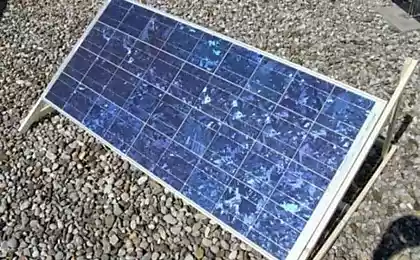129
Programmable biomaterials based on silk were created
Tufts University researchers have created a new kind of solids made of silk protein that can be programmed to change biological, chemical or optical functions, such as changing color when deformed. Using the protein self-assembly method, the researchers created a three-dimensional material from fibroin, a protein that gives silk strength. Then, after molecular manipulation, they obtained solid shapes ranging from nano- to micro-sized with predefined functions.
The unique crystal structure of silk makes it one of the most durable materials in nature. Fibroin, an insoluble silk protein, has the ability to protect other materials.
Although research on the new material is not yet complete, scientists see it as the potential to create mechanical components for orthopedics programmed for growth factor or release of enzymes, surgical instruments, fasteners, bolts and nuts that signal changing environmental conditions.
For example, researchers have created a surgical pin that changes color when its mechanical capabilities are at their limit and it is about to break. Or screws that can be heated to 160C under the influence of infrared light. Or a biocompatible component that secretes bioactive drugs such as enzymes.
“The ability to supply biopolymers with functional elements, control their self-assembly, and modify their final shape opens up vast opportunities for the production of high-performance multifunctional materials,” says lead author Professor Fiorenzo Omenetto.
If you feed silkworms graphene and single-walled carbon nanotubes, the resulting silk will be 50% stronger and will conduct current. This conclusion was reached by Chinese scientists, studying the conductivity and structure of silk protein in cocoons. published
P.S. And remember, just changing our consumption – together we change the world!
Source: hightech.fm/2016/12/27/programmable-silk
The unique crystal structure of silk makes it one of the most durable materials in nature. Fibroin, an insoluble silk protein, has the ability to protect other materials.
Although research on the new material is not yet complete, scientists see it as the potential to create mechanical components for orthopedics programmed for growth factor or release of enzymes, surgical instruments, fasteners, bolts and nuts that signal changing environmental conditions.
For example, researchers have created a surgical pin that changes color when its mechanical capabilities are at their limit and it is about to break. Or screws that can be heated to 160C under the influence of infrared light. Or a biocompatible component that secretes bioactive drugs such as enzymes.
“The ability to supply biopolymers with functional elements, control their self-assembly, and modify their final shape opens up vast opportunities for the production of high-performance multifunctional materials,” says lead author Professor Fiorenzo Omenetto.
If you feed silkworms graphene and single-walled carbon nanotubes, the resulting silk will be 50% stronger and will conduct current. This conclusion was reached by Chinese scientists, studying the conductivity and structure of silk protein in cocoons. published
P.S. And remember, just changing our consumption – together we change the world!
Source: hightech.fm/2016/12/27/programmable-silk























